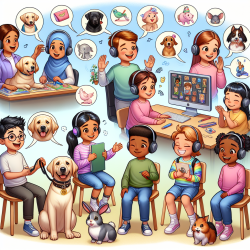Introduction
As technology continues to evolve, the ways in which we communicate and interact have transformed dramatically. This is especially true for adolescents who are growing up in an era of ubiquitous connectivity. A recent study titled Perceptions of the influence of computer-mediated communication on the health and well-being of early adolescents explores the impacts of computer-mediated communication (CMC) on the health and well-being of young people. As practitioners in the field of speech-language pathology, understanding these impacts can help us tailor our approaches to therapy, particularly in the context of online services like those provided by TinyEYE.
Key Findings from the Study
The study highlights two overarching concepts regarding CMC: its multidimensional relationship with health and the duality of its influences—both positive and negative. Four main themes emerged:
- Physical Activity: CMC can lead to increased sedentary behavior, yet it also offers tools like fitness apps that can encourage physical activity.
- Emotional and Mental Disturbance: While CMC can foster connections, it can also lead to emotional distress through cyberbullying and the pressure to maintain an online persona.
- Mindfulness: The constant connectivity can detract from mindfulness, pulling adolescents away from the present moment.
- Relationships: CMC facilitates communication across distances but lacks the depth of face-to-face interactions, which can affect relationship quality.
Implications for Practitioners
For speech-language pathologists and other practitioners working with adolescents, these findings offer valuable insights. Here are some ways to incorporate these insights into practice:
- Encourage Balanced Use: Educate adolescents and their families about the importance of balancing screen time with physical activity and face-to-face interactions.
- Promote Mindfulness: Integrate mindfulness practices into therapy sessions to help adolescents develop skills to stay present and manage stress.
- Address Emotional Well-being: Be vigilant about signs of cyberbullying and emotional distress. Create a safe space for adolescents to discuss their online experiences.
- Foster Healthy Communication: Encourage adolescents to engage in meaningful face-to-face conversations and help them develop skills to interpret social cues.
Encouraging Further Research
While this study provides a foundational understanding of CMC's impacts, there is a need for further research to explore its long-term effects and how best to mitigate negative outcomes. Practitioners are encouraged to stay informed about ongoing research in this area and consider participating in studies that can contribute to the body of knowledge.
Conclusion
Understanding the dual nature of CMC's impact on adolescent health is crucial for practitioners aiming to create positive outcomes. By integrating research findings into practice, we can better support the holistic well-being of young people. For those interested in delving deeper into the study, you can access the full research paper here.










